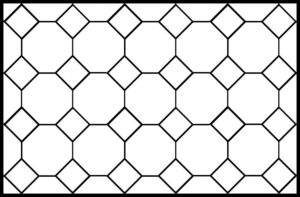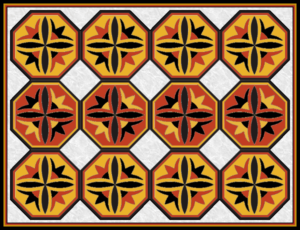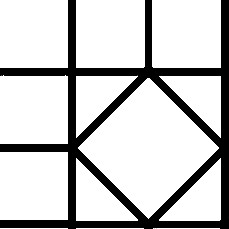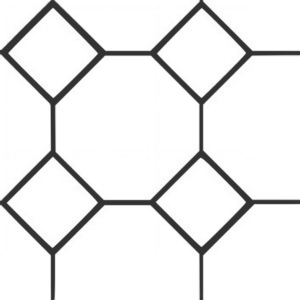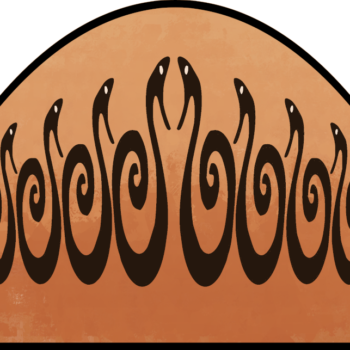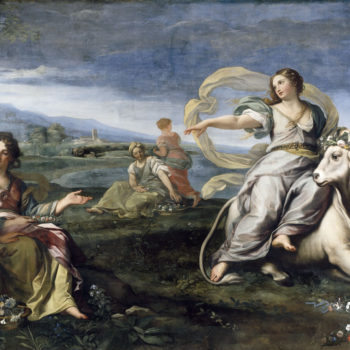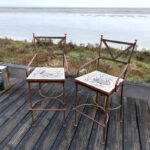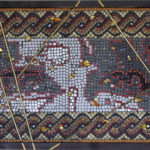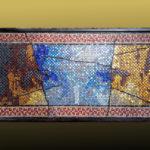The Basilica Santa Maria de Assunta in Aquileia, Italy started as a Church immediately after 313 AD. when the Edict of Milan put an end to religious persecution. From that day, the Christian community was allowed to build its first place of public worship. After the destruction of the first church, the Aquileians rebuilt it four times, using each time the structures of the previous buildings.
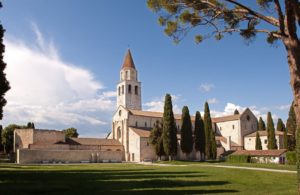
The largest Paleo-Christian mosaic of the Western Empire.
The original 4th century mosaic floor was brought to light in the early 1900’s. With its 760 square metres (8,00 square feet) it is the largest Paleo-Christian mosaic of the western world.
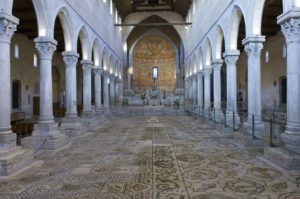
While the mosaic includes ten “carpets”, each one of them represents different highly symbolical scenes.
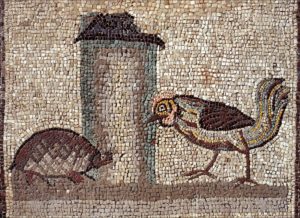
This post is actually about some of the geometric patterns used in the mosaic to frame some of these figurative scenes or Symbols.
Squares and Octagons
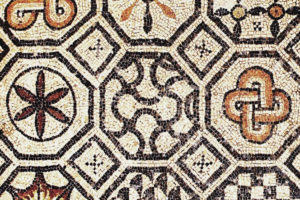
The above pattern used in the Basilica is based on this grid :
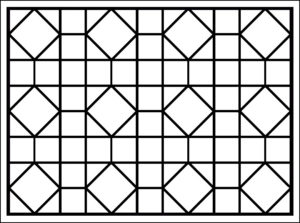
Which can also be shown as a combination of Octagons and squares :
Both versions are very classical and are met in numerous places.
As a matter of fact, this pattern was also used in the 5th century Villa Lalonquette from Southwestern Gaul.
The Basic element of the first pattern is :
 And the basic element of the second one is :
And the basic element of the second one is :
I have explained in my previous post Roman Tile – 01 how you an use these basic elements to create large surfaces.
Here are a few variations on the 1st pattern :
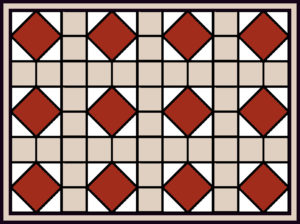

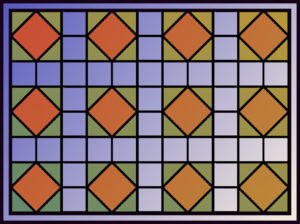
I have documented hundreds of these type of patterns and will be publishing them little by little. Feel free to use these for your own projects. If you do so, it would be cool to mention my name and where you got them from, and also let me know what you are used them for.
Have fun and Good luck !

